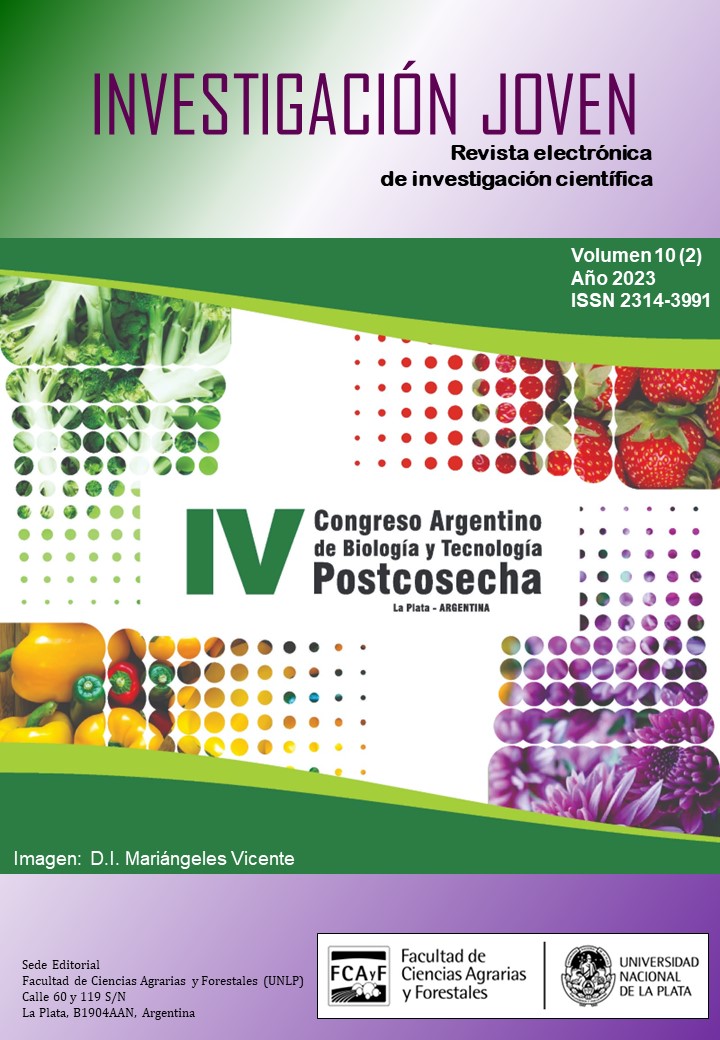Delay in controlled atmosphere: Effect on color, biocompounds and antioxidant capacity in Hass avocado
Palabras clave:
color, pigments, quality parameters, antioxidant capacity, postharvestResumen
Hass variety is the most commercialized worldwide, which is well known by the development of skin changes from green to dark purple during ripening. Fruit quality must be preserved during long transit and storage periods (40-50 day) by the use of postharvest technologies. Low–temperature storage in combination with controlled atmosphere (CA) is the main technology used to extend storage life. Some factors affecting CA efficacy (e.g. varieties, maturity stage and the number of days between harvest and CA storage). This study evaluated the effects of delaying the entry of Hass avocado into CA on color development, total phenolic content (TPC) and antioxidant capacity (AC). Storage conditions (5°C for 50 days) evaluated for avocado with high dry matter content were: i) regular air storage (RA), ii) CA (4% O2 and 6% CO2), iii) 10 d in RA + 40 d in CA, and iv) 20 d in RA + 30 d in CA. All evaluations were performed during storage and after shelf life (20°C), when avocadoes reached the ready-to-eat (RTE; mesocarp firmness <14 N). Results show that, as
expected, skin color did not change during storage, but for the RTE fruit stored under CA showed more color development, reaching a black/purple (above 50%) color in contrast with fruit stored in RA, that only a 10% of fruit showed this color. Total chlorophylls content at the end of storage (50 days) of fruit under CA had higher levels than RA fruit. For the fruit stored under CA, anthocyanins were not detected during cold storage. At RTE stage the anthocyanin content was increased, and fruit under CA showed 5-fold more anthocyanin content than RA. Fruit with delay of 20 d showed a high increase (13-fold) in anthocyanin content. Our results indicate that avocado skin contained high amounts of TPC and AC, but decreased slightly at RTE in fruit stored under CA. In conclusion, a delaying into controlled atmosphere did not affect the development of skin color, total chlorophyll, anthocyanin content, TPC and AC during storage; however, at RTE, both skin color and anthocyanin content were benefited.
Descargas
Publicado
Número
Sección
Licencia
Derechos de autor 2023 D. Olivares, P.A. Ulloa, C. Vergara, M.A. García-Rojas, R. Pedreschi, R. Campos-Vargas, B.G. Defilippi

Esta obra está bajo una licencia internacional Creative Commons Atribución-NoComercial-CompartirIgual 4.0.


















